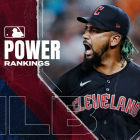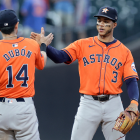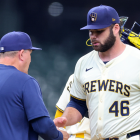Fifteen years ago, the Detroit Tigers played one of the worst seasons in baseball history.
Winning five of their last six games spared the Tigers, who finished 43-119, the indignity of tying the 1962 New York Mets for the most losses since integration. Those Mets went 40-120 but had a legitimate excuse: they were an expansion team. The Tigers weren't, they just played like one.
Anybody with an internet connection can list off morbid facts about the '03 Tigers: they started 0-9, then 1-17; they recorded only three more wins than blowout losses (40 by five-plus runs); they were outscored by nearly two runs per game; and so on. There's sufficient statistical humiliation for the quant masochists in the audience to savor.
But those Tigers serve a purpose greater than their near-constant belittling suggests. The 2003 Tigers are relevant again all these years later because few teams are better qualified to speak about the modern baseball landscape.
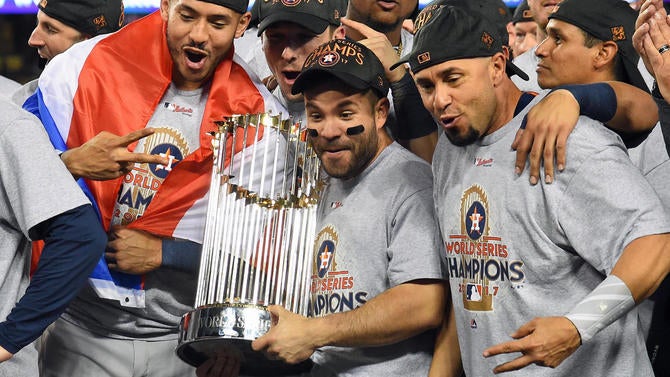
Rooted in basketball, the tanking debate -- on the morals and the ethics, the upside and the downside -- has branched into other sports. Baseball is not basketball, where a star can alter a franchise's fate. Yet consecutive World Series wins by the Houston Astros and Chicago Cubs have been offered as evidence that bottoming out works. Count team executives as believers -- roughly a third of the league entered the 2018 season harboring little to no competitive hopes.
Relatedly, long-term rebuilds have become an easy way for general managers to gain job security without producing short-term results. The same is not true for those employed below management. Regardless of where one comes down on tanking, everyone can agree it fosters a cruel reality for in-uniform personnel -- the players and coaches who deposit their bodies, hours, and efforts to an indifferent cause. There is no fast forward button, no way to skip ahead beyond that 10-game, three-city road trip in August. There's just a seemingly endless grind.
One catch-22 for players on bad teams is that every game is largely meaningless, yet the key to survival is treating each game as immensely meaningful. "It would serve you if you just totally forgot about your record, forgot about the standings, and just played that night's ballgame," MLB Network analyst and former big-league first baseman Carlos Peña told CBS Sports. Peña speaks from experience -- his 108 OPS+ made him a top performer on the '03 Tigers.
Peña and his Tigers teammates had incentive to ignore the big picture -- they were never more than a few days away from another cloudburst of losses. Their longest winning streak that season was four and came early on in May, the only month in which they won double-digit games. Whatever momentum was gained in May was recycled to the sky above and the ground below in a hurry -- the Tigers won eight games in April and June combined.
Detroit's players were no fools. (And who could blame many of them for declining requests for this story?) They knew they were in trouble, almost from the start. Backup catcher Matt Walbeck described a slump-busting effort early in the season that saw many players eschew their homes or apartments in favor of sleeping in the clubhouse overnight. That attempt, and others, proved fruitless. The Tigers were essentially a student who didn't study for the test. "We didn't have that sense that we were going to come in and win the ballgame," Walbeck said. "We were literally just trying to survive and not embarrass ourselves."
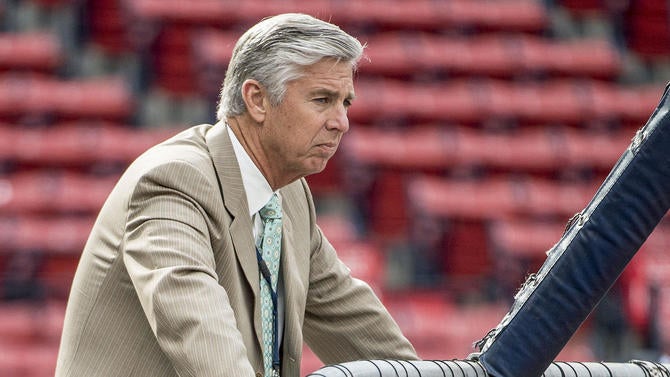
There's no reason to think the 2003 Tigers tanked. There's also no reason to think they tried.
General manager Dave Dombrowski had inherited a team the year prior that had won 55 games. He opted against making noteworthy additions, instead leaning into the abyss in the name of prioritizing youth. Between the end of the 2002 and beginning of the 2003 seasons, the Tigers shed four of their top five performers, according to Baseball Reference's Wins Above Replacement metric: Mark Redman (traded), Jeff Weaver (traded), Robert Fick (non-tendered), and Julio Santana (non-tendered but later re-signed and then released before the season).
Rather than replace those players through external means, Dombrowski turned to his kids. As a result, the 2003 Tigers gave 100 plate appearances to just three players older than 30. They used 10 pitchers to start at least one game, but none of them were beyond their age-27 season. In all, the Tigers used four pitchers who were older than 30. The elder of the bunch, 37-year-old Steve Sparks, was released before the season ended. Don't feel too bad for Sparky -- he became the only member of that team to appear in the 2003 postseason, albeit with the Oakland Athletics.
A full-scale youth movement sounds good in theory, but the Tigers lacked a premium farm system. "Nearly a decade into their rebuilding phase," an essay in Baseball Prospectus 2004 stated, "they are as a strapped for prospects as they were when they started." Baseball America had ranked eight Tigers in the top-100 between 2001 and 2003 -- only Jeremy Bonderman and Franklyn German placed in the top-50, with German making the cut at No. 46.
Bad young teams are preferable to bad old teams from a fan's perspective -- there's hope for a better tomorrow, even if it's misplaced -- but the Tigers' lack of polish led to maddening baseball.
Peña noted how their approaches fluctuated on a whim between overly aggressive and overly passive. The lack of nuance, of feel for the situation and context, extended elsewhere.
"We had guys who didn't even know how to line up for fundamentals properly, for cutoffs and relays," Walbeck said. "[Bench coach Kirk Gibson] would take us out there for early work, like before day games, and we would practice cutoffs and relays and pop-up priorities and bunt defense -- stuff that teams generally just practice a few times during spring training then have it."
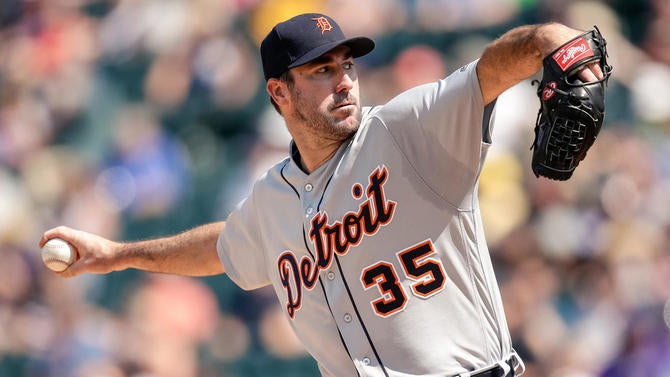
Here's how the next paragraph in that Baseball Prospectus 2004 essay ends: "Dombrowski inherited a situation so disastrous that he simply can't be held to a normal rebuilding timetable." Dombrowski probably agreed with the sentiment back then, but it proved moot. Not only did the Tigers improve by 29 games in 2004, they won the American League pennant in 2006.
There won't be any books written about how the worst team in modern baseball history reached the World Series within three years -- the Tigers lost in the end, after all. But if the book existed, it would examine how the Tigers eschewed building through the draft -- or so the so-called "right way," which, it should be noted, doubles as the most cost-efficient route.
The Tigers did rely on some draft picks, including a very important one. But moreover, Dombrowski delivered on owner Mike Illitch's promise that the Tigers would sign veterans. They added Ivan Rodriguez and Magglio Ordonez. They acquired Carlos Guillen. They grabbed Placido Polanco and Kenny Rogers and others. The Tigers payroll initially declined from $49 million in 2003 to $47 million in 2004. From there, it jumped to $69 million in 2005 before making another jump to $83 million in 2006. Remember: the Tigers hadn't been above .500 since 1993.
Make no mistake, there were talented youngsters on the 2006 team. Curtis Granderson patrolled center field, Joel Zumaya threw heat out of the bullpen, and the rotation was staffed by the likes of Bonderman, Nate Robertson, and Zach Miner. There was also Justin Verlander, whose presence on the roster highlights the risk and potential reward of relying on draft picks. Verlander was the Tigers' best starter that season, throwing 186 innings of 125 ERA+ ball. Still, there were various points over the preceding years where it appeared he'd never pitch in Detroit.
Foreign as it sounds in 2018, back in 2004 the rules dictated that the No. 1 pick alternated between leagues. That meant that although the Tigers lost 119 games -- or 21 more than the National League-worst San Diego Padres -- it would be the Padres selecting first in the draft. "[The] adage is, if you're picking No. 3, there's two players you like; if you're picking No. 12, there's 11 players you like," said Greg Smith, who was Detroit's scouting director at the time.
Smith acknowledged the Tigers were able to home in on their top targets, knowing full and well all but one would be available when they were on the clock. That short list included Verlander, who turned heads with a season-opening performance that saw him throw a six-hit shutout while striking out seven batters against Navy. Because the Tigers had no guarantees Verlander would be available when it was their time to pick, that list also included other top right-handed pitchers from the class, like Rice University's Jeff Niemann and Texas high schooler Homer Bailey.
Throughout the process, Smith would check in with Padres scouting director Bill Gayton, hoping to gain insight into their thinking.
"At one point he was very professional and said, 'Look, I think you'll be in a good spot when it's all said and done.' So, he gave me some reassurance that, at least we've got a shot." The Tigers officially received their shot at Verlander when the Padres took local prep shortstop Matt Bush due to signability concerns. Gayton would tell Bush that he was not the top player on their board, with reports tying the Padres to Verlander, among others.
The rest would be history ... except the Tigers and Verlander had a contentious negotiation that delayed his arrival in pro ball. Smith credited Verlander's father, Richard, for intervening and getting a deal done. Otherwise, the Tigers may have never signed Verlander.
"We had made what we felt was a significant offer to Justin, regarding a major-league contract, et cetera, et cetera," he said. "We had made a decision that we were probably going to reallocate the dollars to our major-league club and go forward."
Verlander signed a major-league contract in October 2004 worth more than $4 million. His $3.15 million signing bonus was identical to the one Bush received. Verlander would become the face of the Tigers franchise for more than a dozen years, until he was traded to the Astros last August. He threw more than 2,500 innings for the Tigers, tallying a 3.49 ERA and more than three strikeouts per walk. He won the 2011 Cy Young and Most Valuable Player Awards, and made six All-Star teams and 16 postseason starts. Verlander finished his Detroit career as the second-best pitcher in franchise history, according to Wins Above Replacement -- a smidge behind Hal Newhouser, whose top three seasons came before integration.
Niemann and Bailey both went on to have decent big-league careers, by the way. But, for comparison's sake, consider that those two accumulated about 10 Wins Above Replacement between them. Verlander, on his own, had two seasons in Detroit where he topped nine wins.
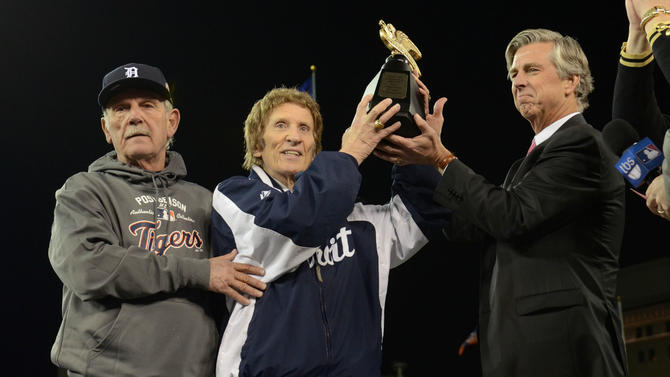
The 2003 Tigers were before their time. Their story reflects the contemporary landscape, illustrating the challenges that come with playing a hopeless season; the redemption that can follow; and how franchises are ultimately at the whim of the interplay between chance and fate. But, as with the Cubs and Astros, the Tigers also prove that someone has to pay failure's rent.
When the Tigers reached the 2006 World Series, their dugout housed a number of players who had partaken in 2003 drubbings. Unfortunately, manager Alan Trammell and his coaching staff were nowhere to be found.
The Tigers brought in the 45-year-old Trammell following a 2002 season that saw them fire Phil Garner six games in. Trammell, one of the few players in franchise history who can claim he finished with more Wins Above Replacement than Verlander, had never managed before. He had served as a coach for both the Tigers and Padres, but had left the organization on shaky terms after learning of his 2000 dismissal through the media. Nonetheless, Trammell returned alongside old teammates (Kirk Gibson, Lance Parrish) and friends (Bob Cluck) included.
Trammell would stay in the position for the ensuing three seasons and oversee a pair of fourth-place finishes before being dismissed, much the way Rick Renteria and Bo Porter were outed for someone else before the tide turned. The "someone else" in Trammell's case was veteran skipper Jim Leyland, who would guide the Tigers to a .540 winning percentage and 25 playoff victories over the ensuing eight years.
Trammell declined to comment for this story, but his ex-players were effusive in their praise for him as a human being and manager.
"For him to go into that season, and take in these young players that pretty much didn't know how to play the game. We weren't playing well, we weren't executing -- we couldn't even execute a play, like a hit-and-run play, or a bunt to move the runner over, just the basic game fundamentals. We struggled to do so. That has to be so frustrating for someone who was the total opposite, who was so good at fundamentals as a player. And yet he always kept his cool, he always remained positive, he always kept his work ethic. So, he was the first one to come up to me and say, 'Hey Carlos, let's go catch some ground balls at first base.'
"Any other person maybe folds it in. Any other person would be concerned about his job. And yet he's concerned about me becoming a better player?"
"Looking back, because he's such a people person, and he has so much respect for the integrity of the game and also because of his longstanding history with the Tigers, there was a lot of pressure for him to produce on the managing side, just by his name alone," Walbeck said. "For him to put the ego aside, and to take a lot -- if not all -- of the blame for the poor play of the players he was given as a whole, it speaks volumes of the type of person he is."
Trammell would spend a few seasons with the Cubs as Lou Piniella's bench coach before later reuniting with Gibson with the Arizona Diamondbacks. In 2014, he returned to the Tigers as a special assistant. (Gibson and Parrish also work for or with the organization in various roles.) Whether or not the Tigers would have enjoyed the same success -- reeling off seven winning seasons in eight tries -- had Trammell remained in place is for tomorrow's scholars to debate.
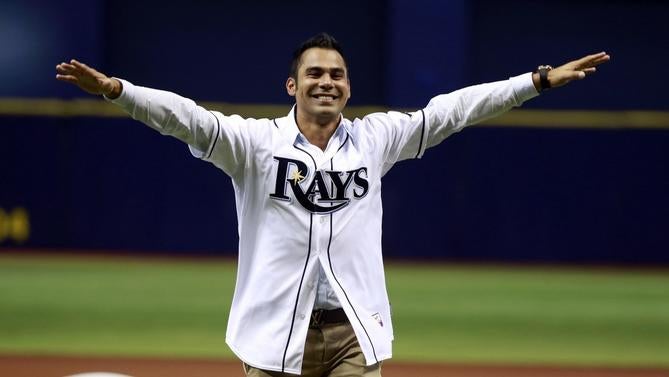
Studies have shown that individuals recovering from near-death experiences often change their approach to life. They're kinder, more compassionate, more empathetic. They don't concern themselves with materialistic desires, preferring to act from love and pursue altruistic goals. No studies have been published on individuals who go through a season from hell, but Peña and Walbeck each provided ample reason to believe there might be a similar effect at play.
In 2003, Walbeck was at the sunset of his playing career. He was a 34-year-old backup catcher who'd hit .217/.266/.298 over the previous five seasons, meaning all his value was tied up in his defense and intangibles. It wasn't shocking, then, that the Tigers braintrust called him into manager Alan Trammell's office on the season's final day and said they had no interest in retaining him as a player. What was surprising was that they offered him a managerial post within the organization.
"If I can't play on one of the worst teams of all time, it might be time to make a career change," he joked about his decision to take their offer.
Walbeck went on to manage for a number of seasons in the Detroit organization. He'd win Baseball America's 2007 skipper of the year award before enjoying stints on the Pittsburgh Pirates and Atlanta Braves farms. These days, he runs his own baseball academy. He still credits the 2003 season for teaching him how to take on adversity while maintaining his poise.
Peña hasn't become a manager -- though his elegance, positivity, and thoughtfulness would lend themselves to the role. He played an additional two seasons for the Tigers before eventually latching on with then-Tampa Bay Devil Rays, with whom he'd become a mainstay throughout their competitive years. Peña believes the 2003 season in Detroit helped him learn to better strategize and focus -- habits that came in handy once he found himself in the postseason.
Walbeck and Peña make the 2003 season sound educational, and there's no denying the Tigers recovered from their detour through the rock bottom. Even after Leyland retired following the 2013 season, the Tigers were able to put forth two more winning seasons before collapsing into their current primordial soup state. That's an incredible run for a team who went nearly 20 years between postseason appearances.
The 2003 Tigers -- the modern era's ultimate loser -- worked out well for other parties, too. Players like Peña, Bonderman, Omar Infante went on to have meaningful careers. Yet, for as many youngsters as were on the roster, that's not a great percentage. Consider that the non-Bonderman members of the rotation entered the year with 56 big-league starts between them. They made 100 starts in 2003, then 125 thereafter -- Mike Maroth, who lost 21 games in 2003, accounted for 96 of those starts.
How much of their failure was a matter of talent? How much was owed to the culture? There's no telling. There's also no telling when another team will experience such depths.
During spring training, Baseball Prospectus simulated the 2018 season 50,000 times using PECOTA, its in-house projection system. Out of all those dry runs, there was just a single one in which a team was forecasted to win 43 games or fewer -- that team? The theoretical Miami Marlins.
Heretofore, the flesh-and-bones Marlins have looked -- well, bonier than not. They finished April with a record of 10-18, which looks a whole lot better than it could have thanks to a three-game win streak to end the first month of the season. For much of the month, they were one of three teams with a winning percentage below the 2003 Tigers' 26.5 percent, joining the Kansas City Royals and Cincinnati Reds. Odds are none of these teams will continue along at this pace. But if one were to suffer the same indignity as the 2003 Tigers, they should keep hope in their hearts -- after all, if the Tigers can turn things around, why can't they?
Viewed from a certain angle, the story of the 2003 Tigers -- the modern era's biggest loser -- is an inspirational tale.
"In the moment, you may look at the situation and say, 'This is not good,'" Peña said. "But in reality, I got the opportunity to fail, to go out there and try and try and try again. And Tram was again writing me in the lineup the next day. That is special.
"I grew a lot that year, so if anything, it was a blessing in disguise. The only problem -- and I think in life, it's this way, not just in baseball -- if we embrace failure and pain, and we learn something from it, then it was not in vain. But the biggest tragedy of all, is if you go through some painful time or through some difficult times in your life, and at the end of that difficult time you are unchanged and you have not grown -- that's tragic. That is really tragic."










